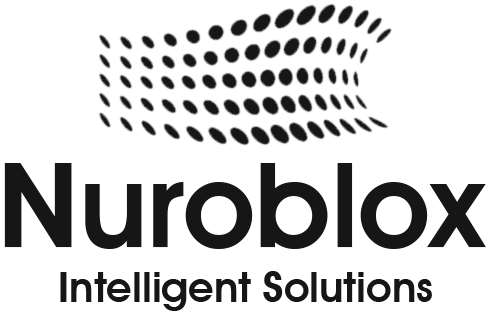AI Agents for Business Automation: Transform Your Enterprise Workflows
Imagine your business running 24/7 without constant human intervention. That future is now possible with AI agents for business automation. These intelligent systems are reshaping how enterprises operate, enabling companies to automate complex workflows, reduce operational costs by up to 30%, and significantly improve decision-making speed.
AI agents represent the next frontier in automation technology, capable of reasoning, learning, and taking autonomous actions to complete business tasks. Unlike traditional automation, which follows rigid, pre-defined rules, AI agents adapt to changing circumstances and handle nuanced business scenarios with minimal supervision. Organizations implementing agentic AI systems report improved efficiency, faster task completion, and the ability to reallocate human talent to strategic initiatives.
This comprehensive guide explores everything you need to know about AI agents for business automation, from foundational concepts to practical implementation strategies. Whether you’re a business leader, operations manager, or automation specialist, you’ll discover actionable insights to leverage these transformative technologies.
Understanding AI Agents in Enterprise Environments
AI agents are intelligent software entities designed to perceive their environment, make decisions autonomously, and take actions toward achieving predefined goals. In business automation contexts, they function as tireless digital workers capable of handling repetitive, complex, and high-volume tasks without fatigue or inconsistency.
The core distinction lies in their autonomous nature. Traditional Robotic Process Automation (RPA) follows explicitly programmed sequences like if A occurs, do B. Conversely, AI agents employ machine learning, natural language processing, and reasoning capabilities to understand context, adapt strategies, and solve novel problems. They can prioritize tasks, make real-time decisions, and collaborate with human teams seamlessly.
Key characteristics of effective AI agents include –
- Autonomy – Performing tasks without requiring constant human direction or approval
- Responsiveness – Reacting intelligently to environment changes and unexpected scenarios
- Goal orientation – Maintaining focus on predefined business objectives despite obstacles
- Continuous learning – Improving performance through experience and pattern recognition
- Integration capability – Seamlessly connecting with existing enterprise systems and workflows
The Business Impact – Why Organizations Are Adopting Agentic AI
Enterprise adoption of autonomous agents is accelerating rapidly, driven by compelling ROI metrics and operational benefits. Organizations across finance, healthcare, customer service, and supply chain sectors are reporting transformative results.
Cost reduction stands as the primary driver. Implementing autonomous agents can reduce operational expenses by 30-40% by automating labor-intensive processes. For example, accounts payable departments processing thousands of invoices monthly can achieve 90% automation rates, freeing skilled accountants for strategic analysis rather than data entry.
Speed and accuracy improvements follow closely. AI agents process information in milliseconds like handling customer inquiries, approving routine transactions, or analyzing data 100 times faster than manual processes. Error rates drop dramatically when human fatigue and oversight are eliminated from repetitive operations.
Scalability becomes frictionless. Unlike hiring additional staff, deploying more AI agents requires minimal incremental cost, enabling businesses to handle growing workloads without proportional expense increases. During seasonal peaks or rapid expansion, organizations can instantly scale operations.
Enhanced employee satisfaction occurs naturally. By removing tedious, repetitive work, teams focus on complex problem-solving, strategic planning, and customer relationships; tasks that leverage human creativity and emotional intelligence.
Real-World Applications – How AI Agents Transform Business Processes
Customer service automation represents one of the most visible applications. Intelligent agents field customer inquiries, resolve common issues, access real-time information, and escalate complex problems to human specialists. These agents handle multiple conversations simultaneously, never experiencing the fatigue that makes human representatives less attentive as shifts progress. Banks report 60% reduction in support ticket volume when deploying agentic systems alongside traditional chatbots.
Financial operations gain remarkable efficiency through AI-driven automation. Autonomous agents audit transactions for compliance, flag suspicious patterns, reconcile accounts across multiple systems, and generate real-time financial reports. Invoice processing, which traditionally required manual verification and approval chains, now operates with minimal human touchpoints, reducing processing time from days to hours.
Supply chain optimization leverages agentic AI for demand forecasting, inventory management, and vendor coordination. These agents analyze historical patterns, market trends, and real-time inventory levels to recommend procurement actions, preventing both stockouts and excess inventory. During disruptions, they dynamically reroute shipments and identify alternative suppliers.
Human resources workflows benefit from autonomous agents managing recruiting, onboarding, and employee records. From screening resumes and scheduling interviews to processing employment documentation and delivering personalized training recommendations, these agents streamline time-intensive HR functions while improving candidate experience and ensuring regulatory compliance.
Data processing and analytics operations scale dramatically with agentic systems. Agents extract data from diverse sources, clean and standardize information, detect anomalies, and generate actionable insights without human intervention, enabling analysts to focus on strategic interpretation rather than data preparation.
Implementation Strategy – Deploying AI Agents Successfully
Successful agentic AI implementation requires systematic planning and organizational alignment. Organizations that rush deployment often struggle with poor adoption, inadequate integration, and disappointing ROI.
Step 1 – Identify high-impact automation opportunities
Analyze current workflows to identify processes that are high-volume, rule-based, and suitable for autonomous execution. The best candidates typically involve repetitive tasks with clear success metrics and minimal exception handling. Customer service inquiries, invoice processing, and data entry represent ideal starting points.
Step 2 – Select appropriate automation platforms
Modern automation platforms combine RPA capabilities with intelligent automation features including machine learning, document understanding, and natural language processing. Leading solutions like NuroStudio enable organizations to build and deploy autonomous agents without extensive coding, accelerating time-to-value.
Step 3 – Design agent workflows with human oversight
Establish clear parameters defining which decisions agents make autonomously versus scenarios requiring human review. Initial deployments often include monitoring periods where agents operate with enhanced logging and override capabilities, building organizational confidence before full autonomy.
Step 4 – Integrate with existing enterprise systems
Ensure agents can communicate securely with legacy systems, cloud applications, and databases. APIs, middleware, and pre-built connectors facilitate seamless integration, preventing the “automation silos” that plague less sophisticated deployments.
Step 5 – Monitor, measure, and optimize continuously
Implement dashboards tracking agent performance metrics including task completion rates, error rates, processing speed, and cost savings. Use these insights for continuous refinement, identifying patterns where agent performance degrades or unexpected scenarios emerge.
Advanced Capabilities – Moving Beyond Basic Automation
Modern AI agents increasingly incorporate advanced reasoning and decision-making capabilities. Generative AI integration enables agents to draft communications, create customized reports, and generate strategic recommendations rather than simply executing predetermined actions.
Multi-agent collaboration represents a frontier capability. Instead of isolated agents, sophisticated systems deploy agent teams where different specialized agents handle distinct components of complex workflows, communicating and coordinating autonomously. This mimics how human teams organize work, enabling handling of intricate business processes that exceed individual agent capabilities.
Continuous learning mechanisms allow agents to improve performance through experience. Rather than static systems degrading over time as business processes evolve, adaptive agents recognize changing patterns and automatically adjust their approaches, remaining effective throughout extended deployments.
Real-time decision intelligence empowers agents to analyze business contexts and make nuanced decisions. Rather than applying simple rules, agents evaluate multiple factors, consider business priorities, and recommend or execute sophisticated decisions that humans would typically reserve for senior staff.

Successful agentic AI deployment requires overcoming significant organizational and technical obstacles. The most common failure point isn’t technology, it’s organizational readiness and change management.
Employee resistance emerges when staff fear job displacement. Successful organizations address this proactively through transparent communication, retraining programs, and career path clarification. Staff typically embrace automation when they understand it eliminates frustrating busywork while creating growth opportunities.
Data quality limitations constrain agent performance. AI agents are only as effective as their input data. Organizations must invest in data governance, cleansing, and standardization before deploying autonomous agents, particularly in document processing or analytics use cases.
Integration complexity can derail projects. Legacy systems rarely interoperate seamlessly with modern AI platforms. Successful implementations allocate sufficient time and resources to integration planning, API development, and middleware configuration.
Security and compliance requirements demand careful attention. Financial institutions, healthcare providers, and regulated industries must ensure agents maintain audit trails, follow data protection regulations, and operate within defined control frameworks. Secure AI automation strategies embed governance directly into agent design rather than treating security as an afterthought.
Measuring Success – Key Performance Indicators
Organizations should establish clear metrics defining agentic AI success before implementation –
- Process efficiency – Percentage reduction in manual labor hours required for targeted workflows
- Cost savings – Total annual savings from labor reduction, error elimination, and improved speed
- Quality metrics – Error rate reduction, compliance adherence, and customer satisfaction scores
- Processing velocity – Reduction in task completion time compared to manual processes
- System availability – Percentage of time agents operate reliably without failures
- ROI timeline – Months to recoup implementation investment through realized savings
Most organizations achieve full ROI within 8-12 months of deployment, with operational benefits extending indefinitely afterward.
AI agents for business automation are intelligent software entities that autonomously perceive their environment, make decisions, and take actions to complete business tasks using machine learning, natural language processing, and reasoning capabilities; unlike traditional automation that simply follows pre-programmed rules
Future Trends – The Evolution of Autonomous Agents
The autonomous agents landscape continues evolving rapidly. Industry trends include –
Increased autonomy and reduced human oversight as organizations gain confidence and agents demonstrate reliability across diverse scenarios.
Expanded industry-specific applications tailored to healthcare, legal, financial, and manufacturing
sectors with domain-specific knowledge and compliance requirements built in.
Improved agent collaboration ecosystems where swarms of specialized agents orchestrate complex multi-stage workflows autonomously.
Enhanced natural language understanding enabling agents to extract context from unstructured communications and documents with increasing sophistication.


